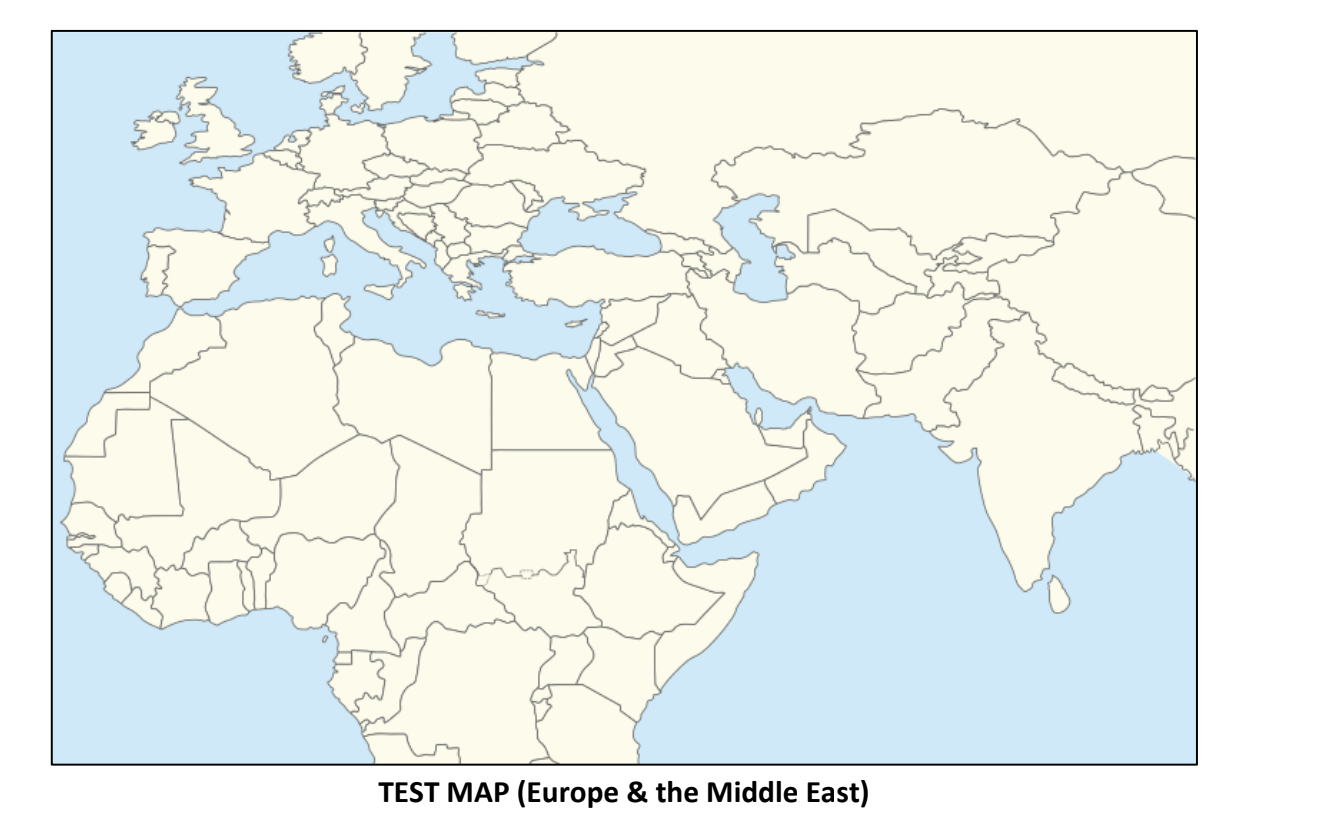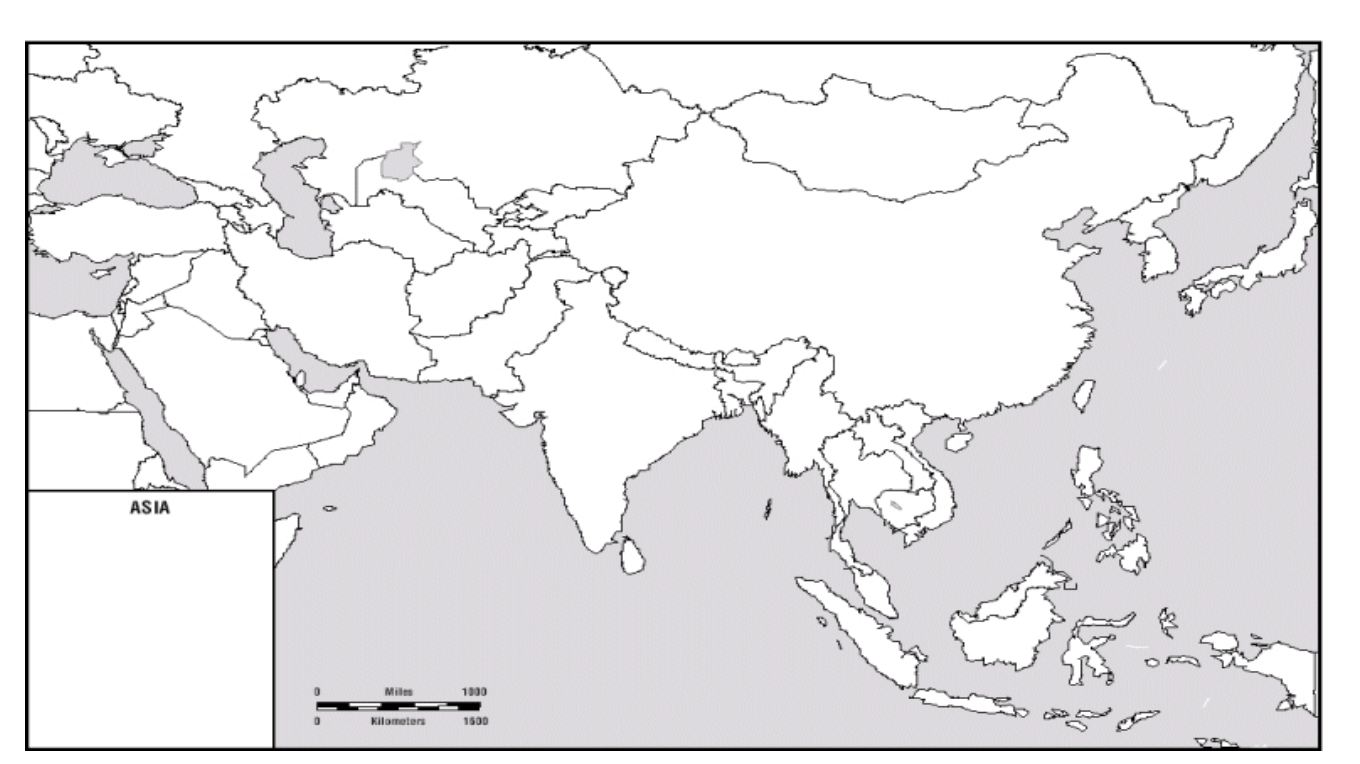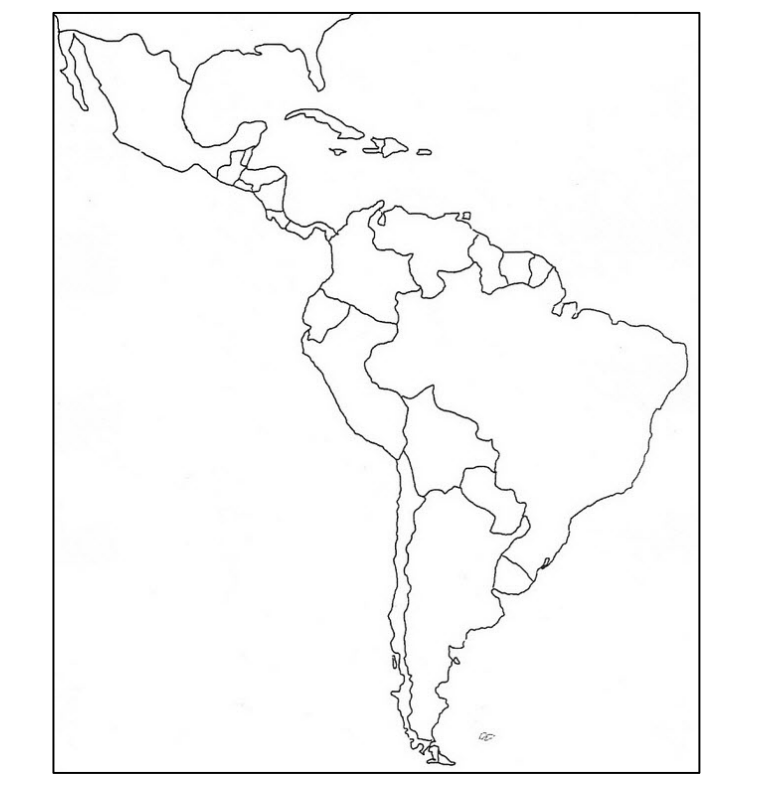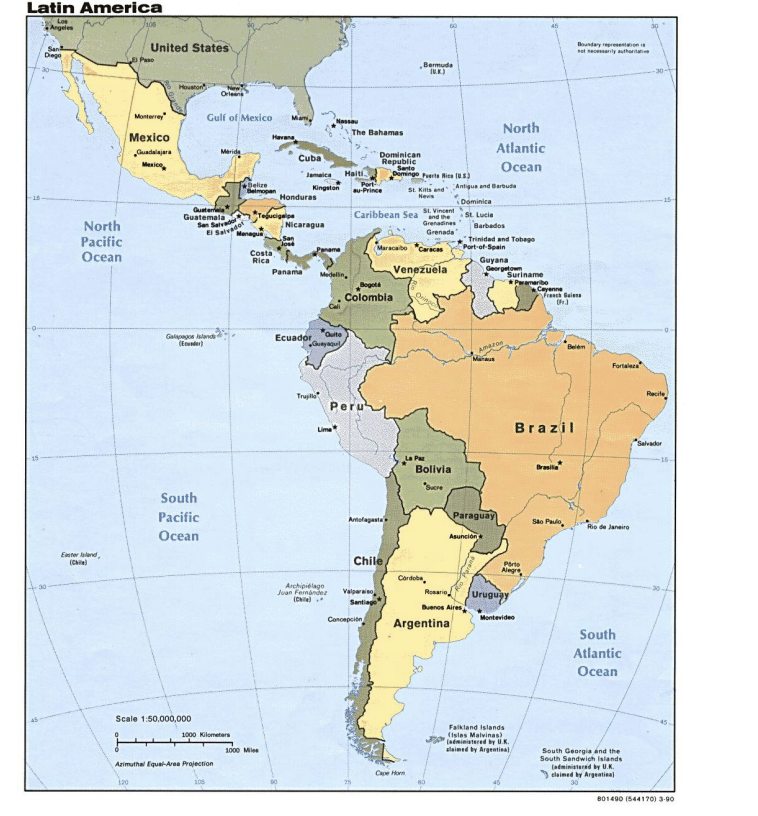APUSH - Cold War
Soviet Union/USSR (Union of Soviet Socialist Republics)
The Soviet Union, led by Joseph Stalin initially and later by leaders like Nikita Khrushchev and Mikhail Gorbachev, emerged as a superpower rival to the United States after World War II. It imposed communist governments in Eastern Europe, leading to the creation of the Eastern Bloc.
Specific Events:
Berlin Blockade (1948-1949): The Soviet Union blockaded West Berlin in an attempt to force the Western Allies to abandon the city. The Berlin Airlift, a massive airlift operation, supplied West Berlin with food and supplies, thwarting Soviet efforts.
Cuban Missile Crisis (1962): The Cuban Missile Crisis brought the world to the brink of nuclear war when the Soviet Union deployed ballistic missiles in Cuba. Tensions eased after U.S. President John F. Kennedy and Soviet Premier Nikita Khrushchev reached a compromise, leading to the removal of missiles from Cuba in exchange for the removal of U.S. missiles from Turkey.
Germany
Divided into East and West after World War II, Germany became a focal point of Cold War tensions. The Federal Republic of Germany (West Germany) aligned with the West, joining NATO, while the German Democratic Republic (East Germany) was under Soviet influence.
Specific Events:
Berlin Wall (1961): The construction of the Berlin Wall by East Germany in 1961 symbolized the division between the communist East and democratic West. The wall became a physical manifestation of the Iron Curtain, separating families and communities for nearly three decades until its fall in 1989.
Czechoslovakia
Czechoslovakia experienced political liberalization under Alexander Dubček's leadership during the Prague Spring of 1968, challenging Soviet dominance in Eastern Europe.
Specific Events:
Prague Spring (1968): The Prague Spring was a period of political reform and liberalization in Czechoslovakia, characterized by increased freedom of speech and movement. However, the reforms threatened Soviet control, leading to the Warsaw Pact invasion of Czechoslovakia to suppress the movement and maintain communism ://
Hungary
Hungary witnessed a nationwide uprising against the Soviet-backed government in 1956, seeking political and economic reforms.
Specific Events:
Hungarian Revolution (1956): The Hungarian Revolution was a spontaneous uprising against the Soviet-imposed government, calling for political freedoms and the withdrawal of Soviet forces. The revolution was brutally suppressed by Soviet tanks and troops, resulting in thousands of casualties and reinforcing Soviet control over Hungary. ://
Iran
Iran's strategic location and oil resources made it a focal point of Cold War geopolitics. The 1953 coup orchestrated by the CIA and MI6 reinstated the pro-Western Shah, Mohammad Reza Pahlavi.
Specific Events:
Rise of the Shah: The CIA and MI6 orchestrated a coup to overthrow Prime Minister Mohammad Mossadegh's government, who had nationalized the Iranian oil industry. The coup restored the Shah to power, aligning Iran firmly with Western interests and sparking resentment among Iranians, setting the stage for the 1979 Islamic Revolution.
Turkey
Turkey, a NATO member, served as a crucial ally for the West during the Cold War due to its strategic location on the border with the Soviet Union.
Specific Events:
Cuban Missile Crisis (1962): Turkey's deployment of U.S. Jupiter missiles in 1961 played a significant role in escalating tensions with the Soviet Union during the Cuban Missile Crisis. The presence of American missiles in Turkey was part of the U.S. strategy of nuclear deterrence against Soviet aggression.
Greece
Greece's strategic location in the Mediterranean made it a focal point of Cold War geopolitics. The Truman Doctrine provided military and economic aid to Greece to prevent the spread of communism during the Greek Civil War.
Specific Events:
Greek Civil War (1946-1949): The Greek Civil War was fought between the government, supported by the United States and Britain, and communist guerrilla forces backed by Yugoslavia and Albania. The conflict emerged from the power vacuum left by World War II and the struggle for control over Greece's political future. The U.S. provided substantial military aid to the government, helping it defeat the communist insurgency and maintain Greece as a non-communist state aligned with the West.
Colonels' Dictatorship (1967-1974): In 1967, a group of military officers seized power in a coup d'état, establishing a military dictatorship known as the Colonels' regime. The regime, led by Colonel Georgios Papadopoulos, suspended democratic institutions, censored the media, and suppressed political opposition. Greece became a key NATO ally during this period, allowing U.S. military bases on its territory as part of Cold War defense strategy. The dictatorship eventually fell in 1974, leading to the restoration of democracy.
Israel
Israel's position in the Middle East made it a key player in Cold War politics, particularly in relation to the Arab-Israeli conflict.
Specific Events:
Suez Crisis (1956): Israel, along with Britain and France, invaded Egypt in 1956 following the nationalization of the Suez Canal by Egyptian President Gamal Abdel Nasser. The invasion was motivated by concerns over Nasser's support for Arab nationalism and ties to the Soviet Union. The United States, fearing escalation and Soviet intervention, pressured the invading powers to withdraw, marking a shift in Cold War dynamics in the Middle East.
Six-Day War (1967): In 1967, Israel fought a brief but decisive war against Egypt, Jordan, and Syria. Israel's preemptive strike destroyed much of the Arab air forces, leading to a swift Israeli victory. The war resulted in Israel's occupation of the Sinai Peninsula, the Golan Heights, the West Bank, and the Gaza Strip, significantly altering the geopolitical landscape of the region. The United States provided military support to Israel during the conflict, solidifying their strategic alliance.
Syria
Syria aligned itself with the Soviet Union during the Cold War, receiving military and economic support. The Syrian government's conflicts with Israel and its involvement in regional politics were influenced by Cold War dynamics.
Specific Events:
United Arab Republic (1958-1961): Syria briefly joined with Egypt to form the United Arab Republic (UAR) under the leadership of Egyptian President Gamal Abdel Nasser. The UAR represented a pan-Arab union aimed at countering Western influence in the region. However, ideological and political differences led to Syria's withdrawal from the union in 1961.
Soviet Influence: Syria's alignment with the Soviet Union during the Cold War led to significant military and economic cooperation between the two countries. Syria received Soviet weapons and military advisors, enhancing its military capabilities and bolstering the Ba'athist regime of Hafez al-Assad. This support allowed Syria to pursue its regional interests and challenge Western dominance in the Middle East.
Egypt
Egypt played a significant role in the Cold War, particularly under President Gamal Abdel Nasser's leadership. It pursued a policy of non-alignment but received military and economic aid from both the Soviet Union and the United States.
Specific Events:
Suez Crisis (1956): Egypt nationalized the Suez Canal in 1956, prompting a joint military intervention by Britain, France, and Israel. The intervention aimed to regain control of the canal and remove Nasser from power. However, pressure from the United States and the Soviet Union forced the invading forces to withdraw, signaling a shift in global power dynamics and the decline of European colonial influence in the region.
Six-Day War (1967): Egypt's confrontation with Israel in 1967 culminated in the Six-Day War, resulting in a devastating defeat for Egypt and its Arab allies. The loss of the Sinai Peninsula and other territories significantly weakened Nasser's regime and exposed the vulnerabilities of Arab military forces. The defeat led to a period of introspection in Egypt and increased Soviet military involvement in the region to support Arab states against Israel.
Afghanistan
Afghanistan became a battleground in the Cold War due to its strategic location between the Soviet Union and South Asia. The country's political instability and ethnic divisions made it vulnerable to external influences.
Specific Events:
Soviet Invasion: In 1979, the Soviet Union invaded Afghanistan to support the communist government against Mujahideen rebels. The invasion led to a prolonged conflict, with the United States providing support to Afghan resistance fighters, including weapons and funding.
Afghan Civil War: The Soviet withdrawal in 1989 precipitated a civil war, with various factions vying for control. The conflict continued into the 1990s, contributing to the rise of the Taliban and the eventual U.S. intervention in 2001.
China
China's role in the Cold War was characterized by the Sino-Soviet split and its pursuit of an independent communist path under Mao Zedong's leadership.
Specific Events:
Sino-Soviet Split: Ideological and strategic differences between China and the Soviet Union led to the Sino-Soviet split in the late 1950s. The split exacerbated tensions within the communist bloc and reshaped global geopolitics, as China pursued its own foreign policy agenda.
Korean War: China's intervention in the Korean War (1950-1953) on the side of North Korea against U.S.-led forces marked its emergence as a significant player in Cold War conflicts. The war ended in an armistice, maintaining the division of Korea.
Korea
The Korean Peninsula was divided along the 38th parallel after World War II, with the Soviet Union occupying the north and the United States occupying the south. The division led to the Korean War and decades of tension between North and South Korea.
Specific Events:
Korean War: The Korean War (1950-1953) was a proxy conflict between the United States and its allies, supporting South Korea, and the Soviet Union and China, supporting North Korea. The war ended in an armistice, but Korea remained divided, with the Demilitarized Zone (DMZ) serving as a heavily fortified border.
Vietnam
Vietnam's struggle for independence from colonial rule and later its division into communist North Vietnam and anti-communist South Vietnam made it a focal point of Cold War conflict.
Specific Events:
Vietnam War: The Vietnam War (1955-1975) was a protracted conflict between communist North Vietnam and the government of South Vietnam, supported by the United States and its allies. The war ended with the fall of Saigon and the reunification of Vietnam under communist rule, marking a significant victory for communist forces in Southeast Asia.
Domino Theory: The Vietnam War was often viewed through the lens of the domino theory, which posited that the fall of one Southeast Asian nation to communism would lead to the collapse of others. This theory influenced U.S. policy in Vietnam and its broader containment strategy in the region.
Taiwan
Taiwan, also known as the Republic of China, emerged as a key U.S. ally in East Asia after the Chinese Civil War. It represented the remnants of the Nationalist government led by Chiang Kai-shek, which fled to the island following defeat by the Communists.
Specific Events:
U.S. Support: The United States provided military and economic assistance to Taiwan, ensuring its security and supporting its claim as the legitimate government of China. This support included the defense treaty signed in 1954 and continued diplomatic recognition until the 1970s.
Guatemala
Guatemala experienced political upheaval during the Cold War, marked by U.S. intervention to prevent the spread of communism.
Specific Events:
1954 Coup: In 1954, the CIA engineered a coup to overthrow the democratically elected government of President Jacobo Árbenz, who was perceived as a communist sympathizer. The coup installed a series of military dictatorships, aligning Guatemala with U.S. interests in the region and halting land reforms that threatened American business interests, particularly the United Fruit Company.
Cuba
Cuba's revolution in 1959 led to the establishment of a communist government under Fidel Castro, sparking tensions with the United States and the Soviet Union.
Specific Events:
The Cuban Missile Crisis in 1962 brought the world to the brink of nuclear war. The discovery of Soviet missiles in Cuba prompted a U.S. blockade and a tense standoff between the superpowers. The crisis was resolved through diplomatic negotiations, with the Soviet Union removing its missiles from Cuba in exchange for the removal of U.S. missiles from Turkey and a pledge not to invade Cuba.
Chile
Chile experienced significant political turmoil during the Cold War, with a democratically elected socialist government coming into power in 1970 under President Salvador Allende.
Specific Events:
Chilean Coup (1973): In 1973, a CIA-backed coup led by General Augusto Pinochet overthrew Allende's government, marking the end of Chile's experiment with socialism. The coup resulted in a brutal military dictatorship that lasted until the late 1980s, characterized by human rights abuses, censorship, and repression of political dissent.
Operation Condor: During the Pinochet regime, Chile participated in Operation Condor, a covert campaign of political repression and state-sponsored terrorism coordinated by South American dictatorships. The operation targeted left-wing activists, dissidents, and suspected communists across the continent, leading to disappearances, torture, and assassinations.





